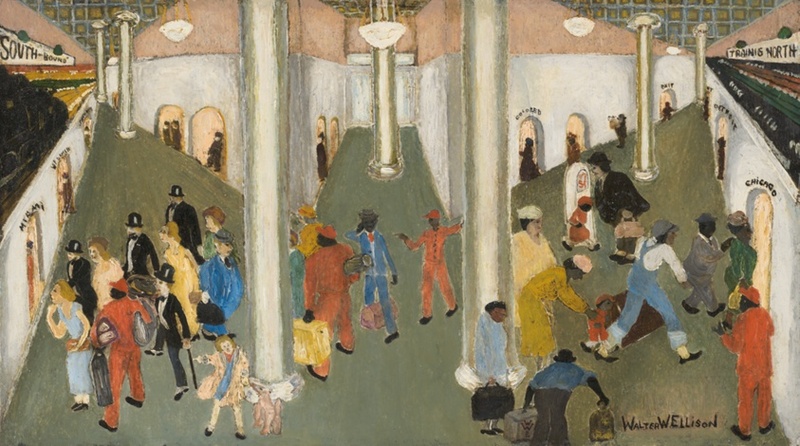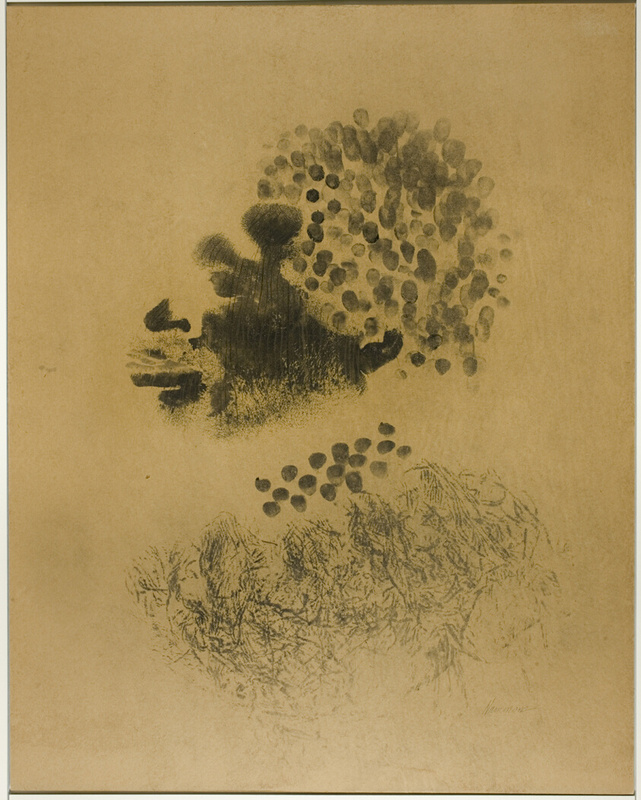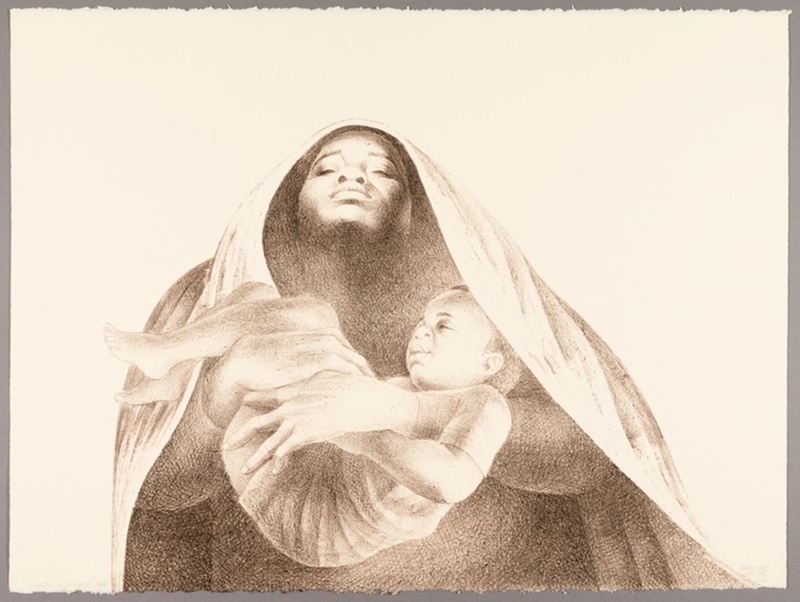It Is That Deep
“I am America. I am the part you won’t recognize. But get used to me. Black, confident, cocky; my name, not yours; my religion, not yours; my goals, my own; get used to me.” - Muhammad Ali
As we move forward we look into works where the subjects within the works are in a dark place but are in a state of reflection. In this section the idea is that we are seeing newly freed enslaved people go and transition into life and what that means in terms of creating an identity for oneself and how difficult that process is.
Let’s take a look at Train Station by Walter Ellison (1899 - 1977) made in 1935. Walter Ellison was an African American artist born in Georgia in 1899. His work shares the experiences of African Americans who moved from the South to the North in hopes of better life opportunities. This work truly shows the idea of transition to a different life and the start to finding a new identity. We are seeing a mass migration of Black people as they move towards more urban areas. Even with this idea of transition and movement this piece still shows us how much racism and segregation is still present. With there being colored only signs in different areas of the train station. And with the white people in the work boarding their train for vacations and the black people boarding their train for destinations like Detroit and Chicago. There is an idea of change for the future present but we are still very much so in that essence of separation and racism. This work is really showing us how one was able to make attempts to relocate and shape a new identity for themselves but shadows of the past are very much still present around you, as shown by the colored signs in the train station. All of the African American people in this painting are starting to shape a new identity by heading North but are still doing this while walking through doors just for colored people.
As we move forward let us take a look at American Costume, made in 1970, and its significance. This work was created by David Hammons (1943 - ), who was famous for mostly his installation works. American Costume is exploring race and identity and what it means to identify with being an American. The work is clearly showing us a person with black features with primitive stereotypes tied into different parts of the works appearance with the texture present in the clothing. The image formed from this work in combination with its name creates a conversation on what it means to be an American and who is allowed to be one. What it means to be an American is always changing as the years go on. The United States is a melting pot and because of this, as time goes on you’ll see more and more different types of people be considered American. But the standard treatment of people of color makes claiming the title of American difficult. You will see more black people in America refer to themselves as Black instead of African American. This is due to feeling unwelcome where they are. At the time period of this work, 1970, Black people might be technically free but that struggle to find a place in a racist system is still present. How can you find identity in a country that is actively working against you?
To end off this section we will observe the work I Have a Dream by Charles White (1918 - 1979) made in 1976. Charles White is best known for his paintings, drawings, lithographs, and murals of African American subjects. I wanted to include this work here to address the identity of the black mother. This section being about the difficulty in finding one's identity with a system built against you, I believe this work goes to show us the presence of parental guidance can also shape that identity. The title, clearly taken from Martin Luther King Jr. I have a dream speech, showing a child being held by a mother with a piece of cloth over their head. The cloth of the head in the image gives a reference to the virgin mary, further pushed by holding a child. The woman's head looking up to the sky gives us a sense of possible longing or hope. The sense of strength and caring is very strong within this work, the strength of the woman and her child. This work also shows us how for some African American people, they had to choose an identity that would benefit the whole rather than just themself. A woman might choose the identity of a mother to keep a family going in hard times, acting as a figure to show love. Many identities are chosen in order for survival, young black children will need a caring mother figure to provide a sense of security that is not present in the rest of the world.
Something all of these works have in common is their depiction of overcoming or reflecting on past experiences and finding new identity, or struggling to find that new identity. Often in discussions of racism today there is the phrase, “it’s not that deep” that gets thrown around, typically by white people. All of these works prove that it is in fact, that deep and our experiences shape us drastically in order to survive. These works, from a first glance, are depicting one thing on the surface to the audience but they all have a deeper and vast history lying behind them. The history of slavery, racism, and segragation gives all of these works a new light. And ignoring the past and viewing it as “not that deep'' makes all these works lose their meaning and the struggle African Americans face when finding their own identity post slavery.


